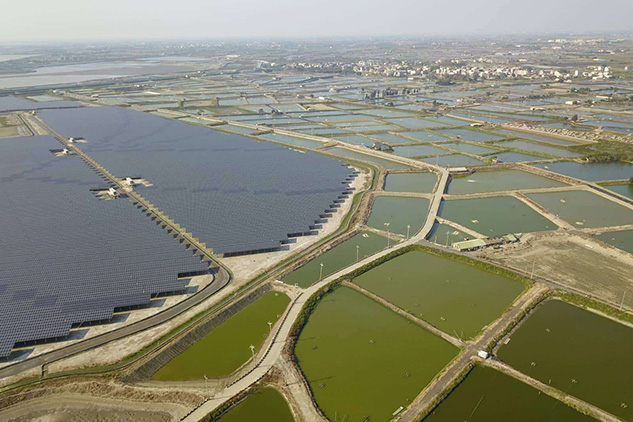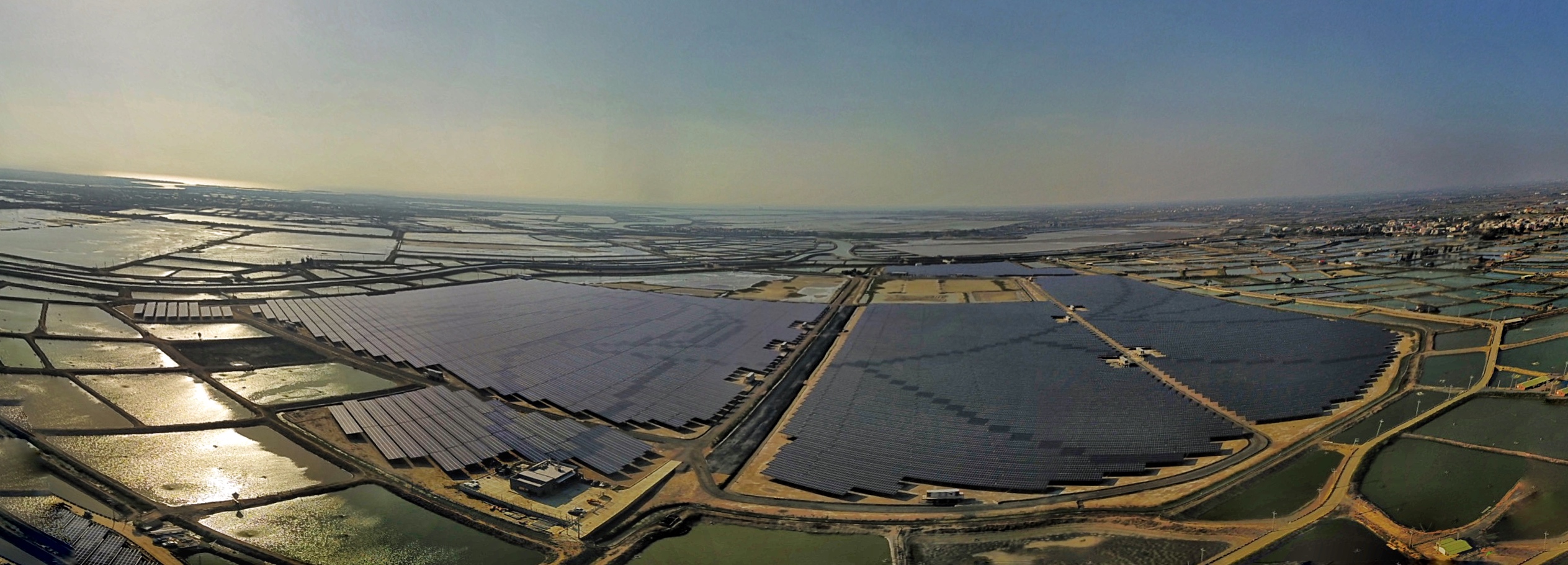Taiwan’s Renewable Market Revolution Taking Shape

Source:Kuo-Tai Liu
Taiwan’s green energy market gained ground when TSMC completed its first direct purchase of solar power from Vena Energy’s Chiayi plant. What impact will this have on Taiwan’s manufacturers and businesses in the future?
Views
Taiwan’s Renewable Market Revolution Taking Shape
By Kwang-Yin Liuweb only
On May 6, Taiwan’s Bureau of Standards, Metrology and Inspection (BSMI) announced the parameters of the country’s first renewable energy projects under which solar power producers can directly distribute electricity to an end user outside the established grid.
Taiwan Semiconductor Manufacturing Co. (TSMC), Foxlink Group, E Ink Holdings, and TCI Co. are among the buyers, Vena Energy Taiwan Solar Energy, Ye Heng Power Co., and Foxwell Energy Corp. are among the producers and Southern Electricity Corp., Mr. Watt and Foxwell Power represent a completely new class of electricity sellers. The projects’ five solar power installations will have a combined installed capacity of nearly 90.4 MW (megawatts) and generate more than 110 million kilowatt-hours (kWh) of electricity.
“This is a milestone in Taiwan’s deregulation of green energy,” proclaimed Huang Chih-wen, the director of the National Renewable Energy Certification Center (NRECC) and head of the BSMI’s 6th Division.
Why Now?
Large-scale green energy buyers, renewable energy producers and sellers, and the Bureau of Energy, BSMI, and NRECC under the Ministry of Economic Affairs have quietly toiled for many years to make this milestone a reality.
In September 2016, Apple became a RE100 member, a corporate leadership initiative led by the Climate Group that is getting companies to commit to go 100 percent renewable.
In 2018, Apple announced that its business was powered by 100 percent renewable energy sources, and it requested it suppliers to follow suit. By April 2019, 44 manufacturers had signed on to the company’s Supplier Clean Energy Program, including Taiwan-based suppliers TSMC, Hon Hai Precision Industry (Foxconn), Compal Electronics, and Pegatron.
2020 is especially significant because it represents the beginning of the RE100’s climate decade in which the initiative hopes to halve greenhouse gas emissions.
Even as the new coronavirus pandemic has brought sectors of the global economy to a halt, renewable energy deals continue unabated, an indication of the urgency that Apple’s green supply chain appeal has triggered.
Huang said many leading Taiwanese companies have taken stock of their renewable energy needs in recent years, and a complete regulatory framework is now in place to help them meet their needs.
Taiwan’s Electricity Act previously required that all renewable energy generated in the country be sold to state-run utility Taiwan Power Co. (Taipower) under a guaranteed purchase system. Last year, however, the law’s renewable energy provisions were amended to give green energy producers other options, spawning the emergence of a new sales and distribution system.
In the past, Taipower monopolized the generation and sale of electricity in Taiwan, but now electricity distribution has been deregulated, starting with green power. Producers will be able to directly sell their power to end consumers or through renewable energy retailers.
Why is it that producers of renewable energy would want to get out from under long-term contracts with Taipower? Simply put, the prices determined by market forces are more attractive.
Vena Energy, the biggest independent power producer of renewable energy in the Asia-Pacific region, found that out through subsidiary Vena Energy Taiwan Solar Energy Ltd. In 2017, when the subsidiary won the tender for the Chiayi salt flats project, it was to be Taiwan’s biggest solar energy project at the time, covering nearly 80 hectares, with an installed capacity of 70.2 MW.
The company snatched the tender with a low bid of NT$2.6 per kWh, far below the feed-in tariff for solar power at the time of up to NT$4.547 per kWh, and close to the standard NT$2.44 per kWh rate for industrial power.
A renewable energy industry insider revealed that TSMC is the first direct buyer of green power from Vena Energy Taiwan Solar Energy’s installation in Chiayi County.

The insider speculated that TSMC offered more than NT$2.6 per kWh, giving producers an incentive to get out of their contract with Taipower, but not as much as Taipower’s feed-in tariff rate of up to NT$4.547, or else the deal would not have been worth it to TSMC.
The deal revealed three key points:
1. Renewable energy power plants can now transmit power directly to users, indicating that the necessary regulatory infrastructure is in place, a major milestone in the deregulation of Taiwan’s electricity sector.
In the past, the renewable energy market relied entirely on a feed-in tariff system, which offers the incentive of fixed purchase prices over long periods to encourage investment in different alternative power sources. In Taiwan, that meant solar energy producers would sign long-term contracts to sell their electricity at guaranteed prices exclusively to Taipower. Now, however, they can directly or indirectly distribute it to end customers.
The new ecosystem will give companies more flexibility in looking for suppliers of green power and move Taiwan toward a freer electricity market, but they will no longer be able to rely on the government to subsidize renewable energy purchases, and instead have the market decide the prices that power-consuming companies will have to pay.
2. Renewable energy installations are reaching agreements to “split up” with Taipower.
People in the industry have often said Taiwan’s supply of green electricity cannot meet demand and are now wondering if that will change once the sale of renewable energy is deregulated.
Much of the leverage determining the answer to that question is in Taipower’s hands.
Because of the urgency of demand for clean sources of power, Taipower announced at the end of March that it had established rules for the cancellation of feed-in tariff purchase contracts for renewable energy projects. The regulations set conditions for what Taipower wants in return for power producers breaking 20-year commitments.
Taipower said three producers have decided to cancel their contracts that originally obligated them to accept feed-in tariffs for their electricity below NT$2.7754 per kWh, and they each have had to negotiate the terms for terminating the deals.
At present, Taiwan’s Renewable Energy Certificate trading platform would suggest demand for green power exceeds supply, Huang said, but that is because most renewable energy produced is contracted for sale to Taipower under the feed-in tariff system.
The TSMC transaction signaled that renewable energy currently controlled by Taipower can be distributed directly to industrial users, a trend that will encourage Taipower to release more of its green electricity.
In the future, the BSMI will set up a green electricity trading platform with a competitive bidding market that gives buyers and sellers the chance to negotiate prices, bringing greater transparency to green energy deals.
3. The green supply chain’s demand for new projects is helping the renewable energy retail sector get off the ground.
Beyond the TSMC deal, another new green energy power plant deal highlights even more clearly the new role of upstart renewable energy sellers, and the important of big brands such as Google and Apple demanding that their renewable energy commitments be sourced by new rather than existing projects.
Mr. Watt, a private renewable energy retailer founded by four young National Taiwan University graduates in 2018, grabbed the first green energy deals with a new power plant, brokering separate purchases of green energy by TCI and E Ink Holdings from solar power producer Green Harvest Holding Co.
The two deals were for only small amounts of power, generated from rooftop installations in Tainan with installed capacity of 7.44 kW, but Mr. Watt sees them as ideal first steps.
“We wanted to start small and find out what kind of challenges we would face so that in the future the process is smoother,” said Mr. Watt CEO Yang Chin-yen.
These many trends all point to green energy deals picking up in the future.
In its environmental impact assessments of its planned 3-nanometer foundry and R&D facility in Hsinchu, TSMC pledged that 20 percent of the electricity used would come from renewable sources, translating to demand for 1.5 billion kWh of power a year. Meanwhile, the first green energy contract for at most 110 million kWh accounts for only 7.3% of TSMC’s renewable energy needs.
According to Taipower, by the end of the year it could provide as much as 840 million kWh of green electricity a year, making it Taiwan’s biggest green energy supplier.
What these trends show is that with a regulatory framework in place and companies urgently needing renewable energy to meet climate change commitments, the liberalization of Taiwan’s green energy market is on the verge of taking off.
Have you read?
♦ In 2020, Taiwan’s Green Energy Will Power Tech Giants Like Apple and Google
♦ The World's Most Sustainable Enterprises are Long-lived - TSMC Makes it into the Top Ten
Translated by Luke Sabatier
Uploaded by Judy Lu






